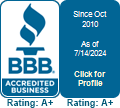You probably know that fluoride is used in toothpaste and in drinking water. Some commonly prescribed antibiotics and many well-known drugs also contain fluoride, in a slightly different form. The widespread use of fluoride has come under greater scrutiny by the FDA and many doctors lately – and for good reason. Dangerous reactions have been reported in people who have used fluoride-containing antibiotics and other drugs.
Some of these adverse reactions have led to permanent severe health problems and even death.
Most people who’ve had MRSA, Staph or other kinds of bacterial infections have taken antibiotic drugs. In fact, nearly all medical doctors prescribe antibiotics exclusively for these kinds of infections. Unfortunately, most people take these powerful drugs without even realizing the serious side effects and potential problems they can cause. Doctors don’t usually take the time to warn you about potential side effects and antibiotic risks before prescribing them.
It’s easy to assume that drugs must be safe if they are approved by the FDA and prescribed by your doctor. I used to feel that way myself. Unfortunately, nothing could be further from the truth, especially antibiotics containing fluoride.
Fluoroquinolone antibiotics
Fluoride containing antibiotics are in a class called fluoroquinolones. There are many different kinds of antibiotics within this class, including the common antibiotics “Cipro” and “Zyvox”. These two fluoride-containing antibiotics are commonly prescribed for Staph and MRSA infections.
The list below shows the generic and common names for the fluoroquinolone antibiotics:
- Ciprofloxacin (Cipro)
- Enoxacin (Penetrex)
- Flucloxacillin (Floxacillin, Floxapen, Fluclox, Flucloxacilina, Flucloxacillin Sodium, Flucloxacilline, Flucloxacillinum, Sesamol)
- Gatifloxacin (Tequin)
- Gemifloxacin mesylate (Factive)
- Grepafloxacin HCl (Raxar – voluntarily withdrawn due to severe cardiac arrhythmias in small number of patients in 1999)
- Levofloxacin (Levaquin, Levaquinquixin)
- Lomefloxacin (Maxaquin)
- Moxifloxacin HCL
- Norfloxacin (Noroxin)
- Ofloxacin (Floxin, Floxinocuflox)
- Sparfloxacin (Zagam)
- Temafloxacin (Omniflox – Severe adverse effects including hypoglycemia, hemolytic anemia, renal failure hepatitis, some fatal reactions, 1992)
- Trovafloxacin mesylate (Trovan – 1999: The European Regulatory Agency (EMEA) suspends marketing following reports of serious liver toxicity. 1999 – The FDA limits use to serious or life-threatening infections due to serious liver toxicity)
Most of the antibiotics listed above are under suspicion by world health regulatory agencies, citing that fluoroquinolone toxicity and side effects outweigh the potential benefits of using them.
Fluoroquinolone antibiotic toxicity and risks
To many experts, fluoroquinolone antibiotics are the most toxic and dangerous antibiotics used today. People who take fluoroquinolones to treat infections have often suffered many adverse reactions, and I’ve heard of some heart-breaking stories over the years. It’s even possible for negative reactions to show up after completing the antibiotic course, making it difficult to correlate back to the antibiotic.
The most common Adverse Drug Reactions (ADRS), or fluoroquinolone side effects, include the following:
- Tendon and muscle pain, including spontaneous ruptured tendons
- Heart problems including abnormal rhythm (arrhythmia) and heart attacks
- Vision disorders
- Ringing in the ears
- Rashes
- Hyperglycemia
- Depersonalization
- Mental disorders
- Seizures and tremors
- Pain
- Liver failure
- Irreversible peripheral neuropathy (numbness and tingling in hands and feet)
- Kidney failure
- Brain damage
- Phototoxicity
- Insomnia
- Nausea
- Headache
- Diarrhea
- Burning pain
- Digestion disorders
- Anxiety
For more information on fluoroquinolone side effects and other antibiotic side effects, you can visit www.rxlist.com, the Internet Drug Index for adverse reactions listed by antibiotic name. You can also view the full FDA approved drug product label (product insert) for any drug online by searching for the drug name at: https://dailymed.nlm.nih.gov/dailymed/about.cfm
Related Articles
Do antibiotics increase your risk for Staph and MRSA?
When antibiotics stop working
Find out what you’re getting into, and know your options
On top of all the toxicity issues, fluoroquinolones and other broad spectrum antibiotics such as clindamycin and cephalosporins are among the highest risk of causing colonization with MRSA and C. difficile. For MRSA bacteria, colonization means they will be living on your skin or upper respiratory tract, but not be causing infection.
And, aside from the side effects listed above, another one is the damaging of your first line of defense against microbial invaders like MRSA – the good bacteria living on your body and within you. All antibiotics have this damaging side-effect.
In summary, before you begin any antibiotic, be sure to talk to your doctor and/or pharmacist about the possible side effects. If you chose to use antibiotics, find out from your doctor if another class of antibiotic is equally effective for your type of infection.
It’s also important to be aware there are many safe antibiotic alternatives that are as effective, if not more so, than antibiotics. As an added benefit, antibiotic alternatives typically boost your immune system and help support your body, instead of having the heavy, severe or debilitating side effects antibiotics can have. I cover the the available alternatives for MRSA and Staph in great detail in my guidebook program MRSA Secrets Revealed.
To your best health,
Michelle
Microbiologist and Natural Health Expert
References:
Muto, CA.; Jernigan, JA.; Ostrowsky, BE.; Richet, HM.; Jarvis, WR.; Boyce, JM.; Farr, BM. (May 2003). “SHEA guideline for preventing nosocomial transmission of multidrug-resistant strains of Staphylococcus aureus and enterococcus.”. Infect Control Hosp Epidemiol 24 (5): 362–86. doi:10.1086/502213.
Adverse effects of fluoroquinolones, https://en.wikipedia.org/wiki/Adverse_effects_of_fluoroquinolones





